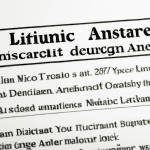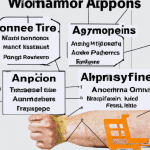Basic 7 Millions In Relief Funding
The COVID-19 pandemic of 2020-21 has caused an unprecedented demand for broadband Internet, in communities large and small. Millions of dollars of relief
funds are now being allocated to local rural communities to help cover the costs of increased broadband access. But in the wake of this investment, broadband providers have raised a number of questions about whether the new funds are
being used effectively and fairly across the nation. What challenges are these rural communities facing when it comes to securing reliable broadband coverage? Can public and private providers ensure adequate Internet access for millions of
people? This article will take a closer look at how the new relief funding affects rural communities and scrutinize the concerns raised by broadband providers. [[1](https://en.wikipedia.org/wiki/Net_neutrality)][[2](https://www.electric.coop/issues-and-policy/broadband)][[3](https://www.usda.gov/sites/default/files/documents/case-for-rural-broadband.pdf)]

Table of Contents
- 1. Broadband Providers: Uniting to Provide Remote Access During COVID-19
- 2. Expanding Digital Networks Through federal Funding
- 3. Unexpected Coverage Concerns Arising Out of Relief Spending
- 4. Ensuring Connectivity for All Despite Financial Volume
- Q&A
1. Broadband Providers: Uniting to Provide Remote Access During COVID-19
The COVID-19 pandemic has highlighted the urgent need for improved access to broadband coverage and internet services. To work around the disruption caused
by the pandemic, many broadband providers have united to provide temporary access to remote services, such as home internet services, to more people by granting discounted rates.
- The telecommunications provider, T-Mobile, has joined their initiative, #ConnectingKids, which provides free internet service for three months to households with children.
- Verizon, another large American provider, committed to offering free internet access to households with students.
- Comcast has recently joined the Call for Action, famously providing two months of free access to their internet essentials services to households affected by the pandemic.
The partnerships between broadband providers to provide remote access during COVID-19 have extended beyond free services too. AT&T recently launched the
Access from AT&T program, granting a few months of free access to various states and rural areas. They are also offering students and parents free access to their ConnectED equipment.
[[1](https://www.qualtrics.com/support/survey-platform/survey-module/editing-questions/formatting-answer-choices/), [2](https://unctad.org/system/files/official-document/tir2020_en.pdf), [3](https://files.eric.ed.gov/fulltext/ED462790.pdf)]
2. Expanding Digital Networks Through federal Funding
The last century has seen tremendous technological advances, and the U.S. government has been actively leveraging those advances. Thanks to government initiatives, the digital infrastructure of the nation is growing more robust by the
day. To further this trend, the federal government has already made and plans to make additional investments in these networks, resulting in greater connectivity and access for all Americans.
The federal government is committing large sums of money for expanding networks, with funding programs for both mobile and broadband connections. [[1](https://www.congress.gov/event/115th-congress/house-event/106651/text?
q=%7B%22search%22%3A%5B%22hasVideo%3AY%22%5D%7D&s=1&r=63)] Additionally, these investments are not limited to the nation’s current infrastructure, but are also aiding in the development of modern, cutting-edge networks that are capable of pushing far beyond today’s internet technology. For example, an initiative announced by Accenture in May 2023 [[3]
(https://www.accenture.com/us-en)] is looking to provide the infrastructure to support AI-driven networks, creating an infrastructure to power the connected society of tomorrow. [[2](https://www.wiche.edu/wp-content/uploads/2023/05/2023-May-Agenda-Book-Interactive.pdf)]
- Mobile Connections: Services such as 5G networks that enable faster mobile connections;
- Broadband Connections: Investments to expand broadband connections in rural areas;
- AI Networks: Developing the infrastructure to support AI-driven networks.

3. Unexpected Coverage Concerns Arising Out of Relief Spending
As relief from the economic fallout of the COVID-19 pandemic has flooded into many countries, so too have concerns arisen as a result of the rapid adoption and implementation of various pandemic assistance programs.
Be it nation-wide programs such as unemployment benefits or government-subsidized business loans, the implementation of such programs has
inadvertently resulted in coverage gaps in some sectors. This is due to the lack of specific provisions within the rules and regulations for the handling of certain scenarios, such as:
* Unique ownership structures and business models;
* Companies with multiple locations or headquarters;
* Those with varying payroll sizes;
* Those with different products or services.
In this instance, crafting appropriate policies to effectively cover the gaps caused can be tricky. This can be especially so in the case of digital transactions, where the [[1](https://www.w3.org/TR/2011/WD-html5-author-20110809/spec.html)] language used to implement online order forms for consumer goods may not
anticipate certain [[2](https://www.imf.org/-/media/Files/Data/CPI/cpi-manual-concepts-and-methods.ashx)] scenarios. Similarly, attempting to apply [[3](https://html.spec.whatwg.org/)] criteria that is not adapted to account for such scenarios may lead to discrepancies in quality or cost of goods and services.
In an attempt to avoid unexpected coverage gaps, governments around the world have enabled the use of more targeted relief programs. This has largely been
done by relying on data-driven approaches to provide more detailed breakdowns of the true cost of living, as well as expanding the default definitions of poverty to address the effects of digital exclusion and regional divergence.
4. Ensuring Connectivity for All Despite Financial Volume
Basic 7 Millions In Relief Funding
The Challenge of Connectivity Basic 7 Millions In Relief Funding
In the 21st century, technology has greatly impacted how people interact and access information. As a result, understanding the importance of connectivity for individuals across various countries is essential. Despite this, unequal economic
circumstances can prevent people from accessing the internet and taking advantage of the tools and resources available online. There are various environmental, financial, and social barriers that impact users from developing countries.
Proposals for Connectivity Initiatives
- Develop and promote more cost-effective and affordable plans and hardware for web access.
- Empower digital education initiatives in an effort to start to close the gap between those who have access and those who do not.
- Create conducive infrastructure and hardware that serves the needs of existing customers.
- Invest in partnerships with local providers through consumer subsidies and access packages.
- Promote public-private partnerships and a regulatory environment that can improve access to information.
Engaging with the digital world is necessary in order to benefit from the advancements of technology. In order to reach the maximum potential of a
connected society, the barriers of access must be addressed. This might involve providing subsidies for cost-effective hardware and making sure that local internet providers are offering competitive prices. With the right strategies in place, it is possible for governments to provide internet access to everyone regard
less of their financial power and location. [[1](https://pracownik.kul.pl/files/12439/public/3_David.pdf),[2](https://eloncdn.blob.core.windows.net/eu3/sites/783/2018/05/visions62012.pdf),[3](https://www.baycollege.edu/_resources/pdf/academics/academic-resources/open-education/principles-public-speaking.pdf)]
Q&A
Q: What is the Provider Relief Fund?
A: The Provider Relief Fund is a fund established by the United States Department of Health and Human Services (HHS) through the Coronavirus Aid, Relief, and Economic Security (CARES) Act. It provides financial assistance to
eligible service providers – including broadband providers – for the purpose of constructing, improving, or expanding broadband networks in rural areas [[1](https://broadbandusa.ntia.doc.gov/resources/federal/federal-funding)].
Q: Where does the funding come from? Basic 7 Millions In Relief Funding
A: The funding for the Provider Relief Fund was allocated from the American Rescue Plan Act of 2021 (ARPA). ARPA was passed by Congress and later
signed into law by President Joe Biden as a measure to provide economic relief in the midst of the coronavirus pandemic. US citizens are eligible for payments, expanded unemployment benefits, and other forms of aid [[2](https://www.nlc.org/covid-19-pandemic-response/american-rescue-plan-act/arpa-local-relief-frequently-asked-questions/)].
Q: What types of expenses are allowed to be covered by the fund?
A: The Provider Relief Fund covers a number of different expenses. This includes expenses related to lost revenue, health care-related expenses due to COVID-19, and other technologically related expenses. Permissible uses of the funding may
also include purchasing of personal protective equipment (PPE), testing kits, and other items necessary to respond to the pandemic [[3] Basic 7 Millions In Relief Funding (https://www.hrsa.gov/provider-relief/reporting-auditing/allowable-expenses)].
Writing an effective outro or conclusion for an article can be tricky. However, the goal is to wrap up the topic with impact and tie up any loose ends.
In the case of this article: “[Broadband Providers Raise Coverage Concerns Over Basic 7 Millions In Relief Funding]”, it is important to ensure that the reader takes off with the right message. Keeping in mind the style of creative and the tone of neutral, an outro could be something along the lines of: Basic 7 Millions In Relief Funding
“The issue of providing adequate broadband coverage to millions across the US remains a pressing one – with rising concern over possible under coverage as the US moves to invest billions of dollars in relief funding. This investment is essential to bridge the digital divide, so that everyone is among the socially connected regardless of where they live and work”. [[1]
(https://www.ftc.gov/sites/default/files/attachments/press-releases/ftc-staff-revises-online-advertising-disclosure-guidelines/130312dotcomdisclosures.pdf)] [[2](https://becomeawritertoday.com/tone-in-writing/)] [[3](https://www.nytimes.com/2018/04/12/learning/over-1000-writing-prompts-for-students.html)]




